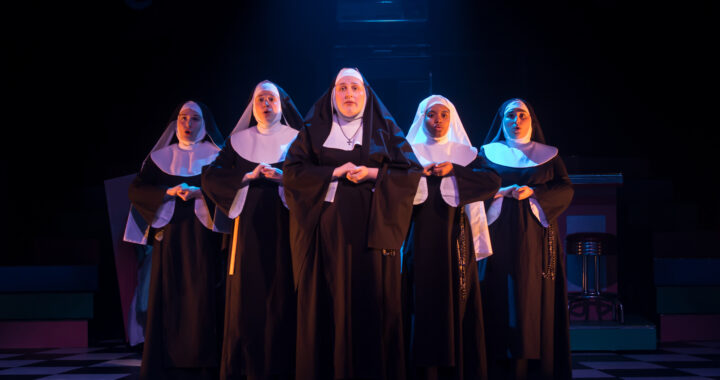Netflix’s “Russian Doll” puts a twist on classic time loop story
3 min read
Netflix
By ASHLEIGH GRIM
Staff Writer
“Russian Doll” puts a surprising twist on the classic time loop storyline. It’s funny, witty and sometimes bizarre, but underneath, it uses the time loop to work the characters through trauma and depression in a raw and honest way.
The show follows Nadia Vulvokov (played by Natasha Lyonne), a self-absorbed, rebellious software engineer, through the night of her thirty-sixth birthday, a night that carries immense baggage for her. Nadia, who has little regard for the consequences of her actions, spends most of the night trying to find her missing cat. By the end of the night, worry leads Nadia straight to her death, for the first time.
Immediately after she dies, the scene opens right back into the bathroom where the show opened, thus begins the loop. Every death opens back to her staring at her reflection and the reality in which she is living and the trauma she is trying to overcome.
Nadia cycles through trauma, deaths and many, many drugs before she finally meets Alan (played by Charlie Barnett), a uptight, routine-oriented man who is coping with the trauma of his own night. As the show progresses, Alan soons starts to learn who, exactly, he is and why he is such an integral part to the time loop both characters are stuck in. Both of the characters develop individually in the show, but they soon start to develop together and start to unravel why they are stuck together.
The show put these two characters in the same situation to show how important it is to have other people around you when you are dealing with life, especially if they are going through the exact same things.
As Nadia and Alan move through the scenes together, and witness pieces of their nights together, they share more of themselves with each other than they thought they would ever share, and more than they would ever want to. Their closeness allows the two of them to flourish in who they really are. Nadia’s callous attitude surrenders to softer moments, and Alan allows himself to lose control and feel what he is actually going through.
Lyonne and Barnett work exceptionally well together and have the on-scene chemistry that it takes to tackle the heavy topics of the trauma that the characters have gone through, and the resulting depression that stems from that trauma.
“Russian Doll” represents mental health throughout the show in many ways. Nadia moves through her nights, trying to forget the trauma in her past with her mother, and avoiding any idea of commitment. Many of her loops include her ex-boyfriend John (played by Yul Vazquez), who reasserts his commitment to her and the desire to continue their relationship and build a relationship with his daughter.
The scenes that retell her past are laced with trauma and depression from her childhood. She travels to many places in order to try and put the pieces together- a synagogue, a homeless shelter and the local drug dealer. Not only does she have to face the question of why she keeps dying, but she has to come to grips with how her past relates to the deaths.
Despite the serious issues of mental health being touched on, this show is just as comedic as it is dark. Nadia’s sense of humor keeps the show light in it’s dark moments, and the bizarre ways that she dies helps to amplify her character.
The show also boasts high reviews from its critics for being a great example for strong female screenwriters. In an article by the Review, Maya Walker said, “with a writers room full of all women, the show undermines the notion that women can’t write and direct good television. Women know women better than anyone else.”
“Russian Doll” is a show full of complexity and drama. It’s a unique take on processing and accepting past trauma. and as Nadia moves throughout the scenes, she begins to find the road to self-discovery and true relationships.


